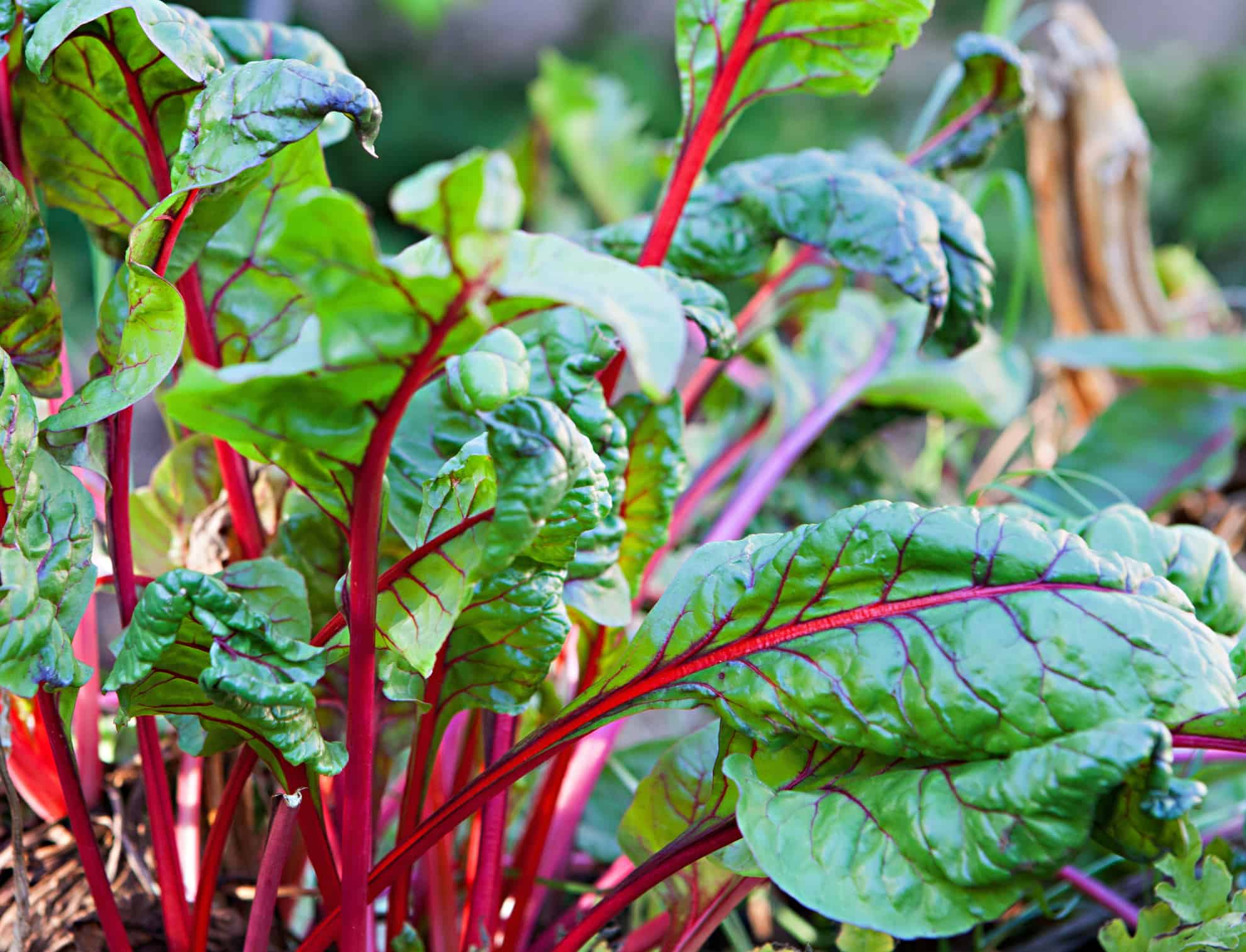October ushers in the fall season, where the landscape transforms into a canvas of warm hues. But it doesn’t mean your gardening journey comes to an end. In fact, it’s the perfect time to roll up your sleeves and plant a variety of leafy greens that thrive in the cooler temperatures of fall. These versatile veggies not only add vibrancy to your garden but also pack a nutritional punch. In this comprehensive guide, we’ll explore eight leafy green vegetables that you can plant in some parts of the U.S. in October. From planting tips to nutritional benefits, we’ve got you covered.
1. Spinach (Spinacia oleracea)
Spinach is a classic leafy green, beloved for its tender leaves and versatility in the kitchen. It prefers well-draining soil enriched with organic matter best suited for USDA zones 3 to 9. This cool-weather crop thrives in temperatures between 35°F to 75°F (1.5°C to 24°C). When planting in October, you can expect spinach to mature within 40 to 50 days. Harvesting can begin when the leaves reach the desired size, typically 6 to 8 inches (15 to 20 cm) long. Spinach is a nutritional powerhouse, rich in vitamins A and K, iron, and folate, making it an excellent addition to your fall garden and your diet.
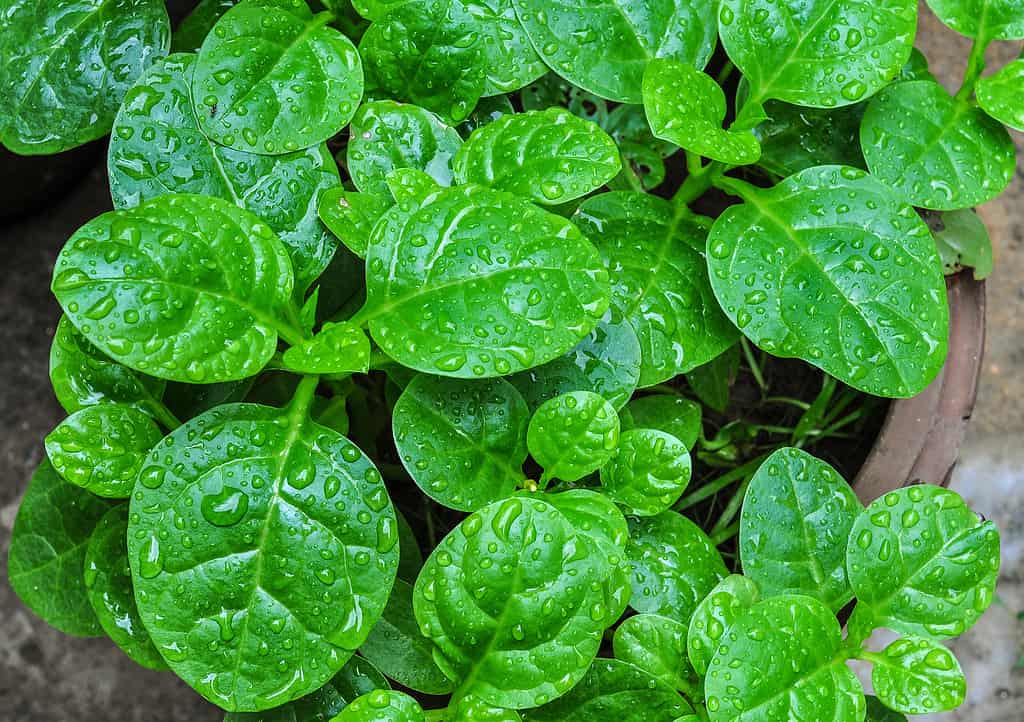
Best suited for USDA zones 3 to 9, spinach prefers well-draining soil enriched with organic matter.
2. Kale (Brassica oleracea var. sabellica)
Kale, with its robust and curly leaves, is not only visually appealing but also nutritious. It can thrive in USDA zones 7 to 10. This cold-hardy green can tolerate frost, and it prefers well-draining soil. In zones 7 and above, providing partial shade can help prevent bolting. October planting ensures a steady supply of fresh kale well into the cooler months. Kale typically matures within 55 to 75 days, depending on the variety. Harvest the outer leaves first, allowing the inner leaves to continue growing. Kale is a nutritional powerhouse, rich in vitamins A, C, and K, as well as calcium and fiber.

October planting ensures a steady supply of fresh kale well into the cooler months.
©Thirawatana Phaisalratana/iStock / Getty Images Plus via Getty Images
3. Swiss Chard (Beta vulgaris var. cicla)
Following, Swiss chard, with its vibrant stems and glossy green leaves, is a garden favorite. It thrives in USDA zones 3 to 10. Similar to other leafy greens, Swiss chard prefers well-draining, nutrient-rich soil. It can tolerate partial shade in warmer regions. October planting sets the stage for a bountiful harvest well into late fall and even early winter in some areas. Swiss chard matures in approximately 50 to 60 days, and you can start picking leaves as soon as they reach the desired size, typically 6 to 8 inches (15 to 20 cm). It is rich in vitamins A, C, and K, as well as magnesium and potassium, making it a nutritious addition to your garden and your plate.

Swiss chard matures in approximately 50 to 60 days, and you can start picking leaves as soon as they reach the desired size.
©iStock.com/zysman
4. Lettuce (Lactuca sativa)
Next up, lettuce. It comes in various types, including butterhead, romaine, and leaf lettuce, each with its unique flavor and texture. It’s well-suited for USDA zones 3 to 10. Lettuce prefers cooler temperatures (optimum growing temperatures of 60 to 65°F, or 15 to 18°C) and well-draining soil. In warmer zones, providing partial shade can help prevent bolting. Planting lettuce in October ensures a steady supply of fresh, crisp leaves for salads and sandwiches. Lettuce typically matures within 30 to 60 days, depending on the variety. Harvest leaves when they reach the desired size, typically 4 to 6 inches (10 to 15 cm). Lettuce is low in calories and a good source of vitamins A and K.
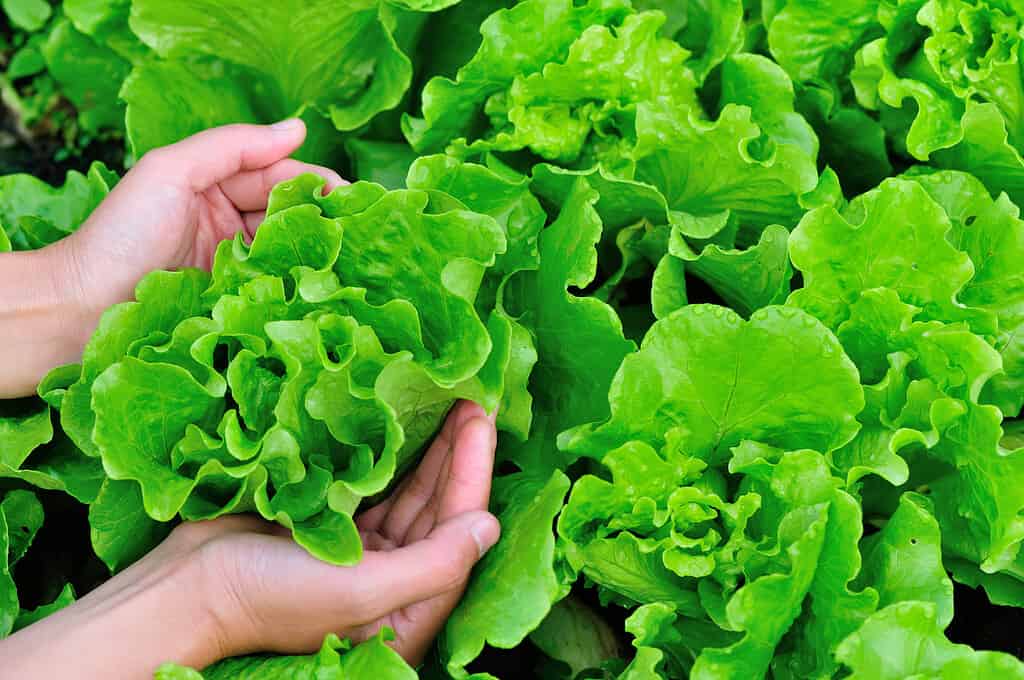
Lettuce comes in various types, including butterhead, romaine, and leaf lettuce, each with its unique flavor and texture.
©lzf/Shutterstock.com
5. Arugula (Eruca vesicaria subsp. sativa)
Arugula’s peppery, nutty flavor adds a zesty kick to salads and other dishes. It thrives in USDA zones 3 to 11 and prefers well-draining, slightly acidic soil. Arugula can tolerate partial shade in warmer regions. Planting arugula in October allows you to enjoy its rapid growth and fresh, crisp leaves. Furthermore, arugula typically matures within 30 to 40 days, and you can start harvesting when the leaves are 2 to 3 inches (5 to 8 cm) long. Arugula is high in vitamins C and K, as well as folate and calcium — talk about a nutritious and flavorful addition to your garden and your meals!

Planting arugula in October allows you to enjoy its rapid growth and fresh, crisp leaves.
©vaivirga/Shutterstock.com
6. Mustard Greens (Brassica juncea)
Next, mustard greens have a spicy and slightly bitter flavor, making them a favorite in Southern cuisine. They thrive in USDA zones 6 to 11 and prefer well-draining, fertile soil. Mustard greens can tolerate partial shade in warmer zones. What’s more, planting them in October ensures you’ll have flavorful greens as they reach their peak tenderness. Mustard greens typically mature within 40 to 50 days. Harvest the leaves when they are young and tender, usually at around 4 to 8 inches (10 to 20 cm). Mustard greens are a good source of vitamins A, C, and K, as well as calcium and iron.
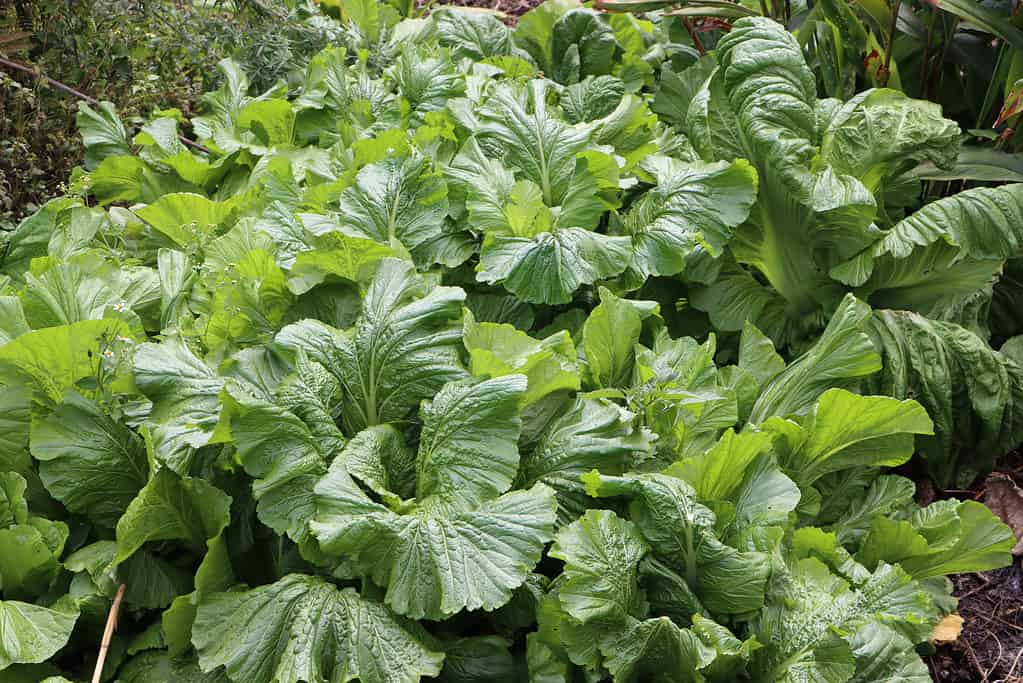
Mustard greens are a good source of vitamins A, C, and K, as well as calcium and iron.
©Pravruti/Shutterstock.com
7. Collard Greens (Brassica oleracea var. viridis)
Collard greens have a mild, slightly earthy taste and are often used in traditional Southern dishes. They thrive in USDA zones 8 to 10 and prefer well-draining, fertile soil. Similar to mustard greens, collard greens can tolerate partial shade in warmer zones. Moreover, planting them in October ensures a prolonged harvest into the colder months. Collard greens typically mature within 60 to 80 days. Harvest the leaves when they are young and tender, typically 8 to 10 inches (20 to 25 cm). Finally, collard greens are rich in vitamins A, C, and K, as well as calcium and fiber.
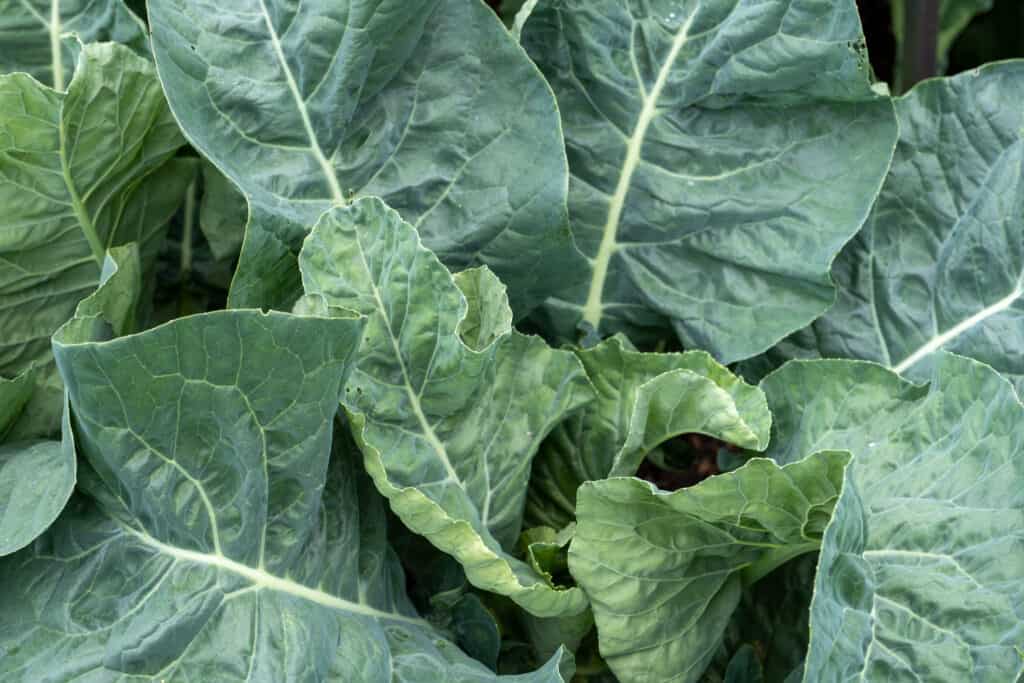
Similar to mustard greens, collard greens can tolerate partial shade in warmer zones.
©iStock.com/Monique Shaw
8. Mizuna (Brassica rapa var. nipposinica)
Last but not least, Mizuna, with its delicate, feathery leaves and slightly peppery flavor, is a staple in Japanese cuisine. It’s well-suited for USDA zones 3 to 10 and prefers well-draining, moist soil. In warmer regions, providing partial shade can help prevent bolting. Planting mizuna in October allows you to enjoy its fresh and crisp texture in salads and stir-fries. Mizuna typically matures within 40 to 50 days. As with the other types of greens, harvest the leaves when they reach the desired size, usually 4 to 6 inches (10 to 15 cm). Mizuna is high in vitamins A, C, and K, as well as iron and folate.
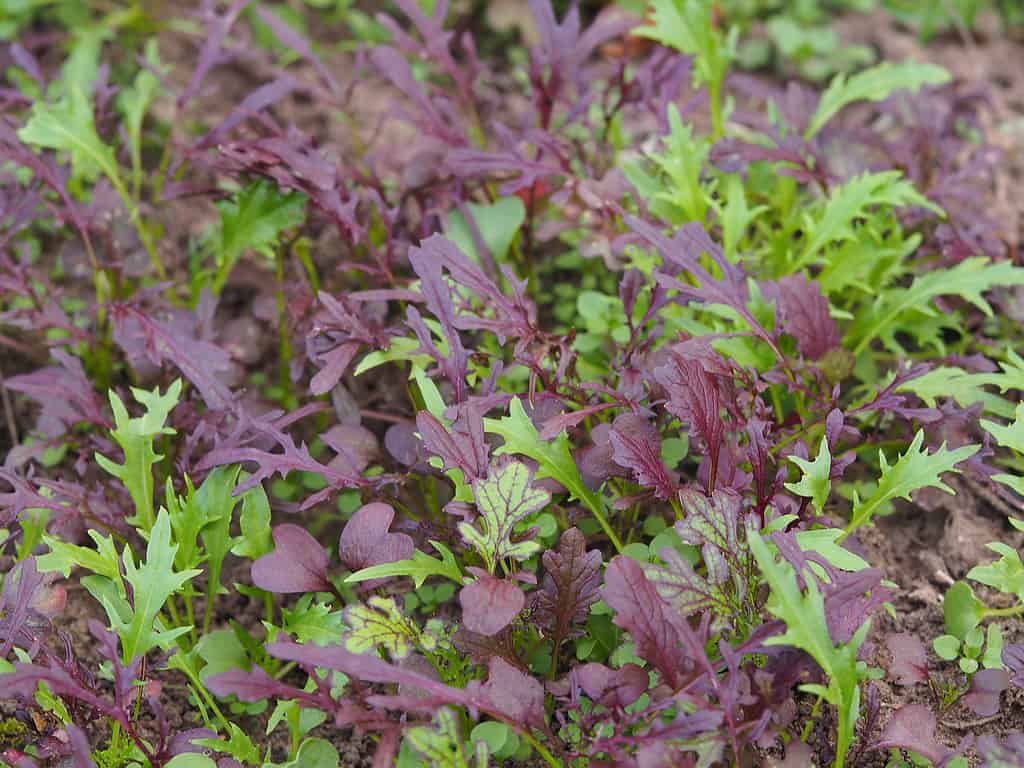
Mizuna, with its delicate, feathery leaves and slightly peppery flavor, is a staple in Japanese cuisine.
©Elena Zakharova/iStock via Getty Images
October in the Vegetable Growing Cycle
Planting leafy greens in October is not just about enjoying a delicious harvest during the fall. It also plays a crucial role in the broader vegetable growing cycle. By planting in the fall, you ensure a steady supply of fresh greens as cooler temperatures set in. Moreover, some greens actually become sweeter after exposure to frost.
As you cultivate these leafy greens in October, you’re setting the stage for a bountiful winter harvest, depending on your region’s climate. Additionally, planting in the fall can help you practice crop rotation, which is essential for maintaining soil health and preventing pest and disease issues.
So, whether you’re a seasoned gardener or just starting your gardening journey, consider planting these leafy greens in October to enjoy a harvest of fresh, nutritious, and delicious vegetables while contributing to a thriving garden ecosystem. Happy gardening!
| Rank | Vegetable | Zones |
| #1 | Spinach | 3-9 |
| #2 | Kale | 7-10 |
| #3 | Swiss Chard | 3-10 |
| #4 | Lettuce | 3-10 |
| #5 | Arugula | 3-11 |
| #6 | Mustard Greens | 6-11 |
| #7 | Collard Greens | 8-10 |
| #8 | Mizuna | 3-10 |
Thank you for reading! Have some feedback for us? Contact the AZ Animals editorial team.

